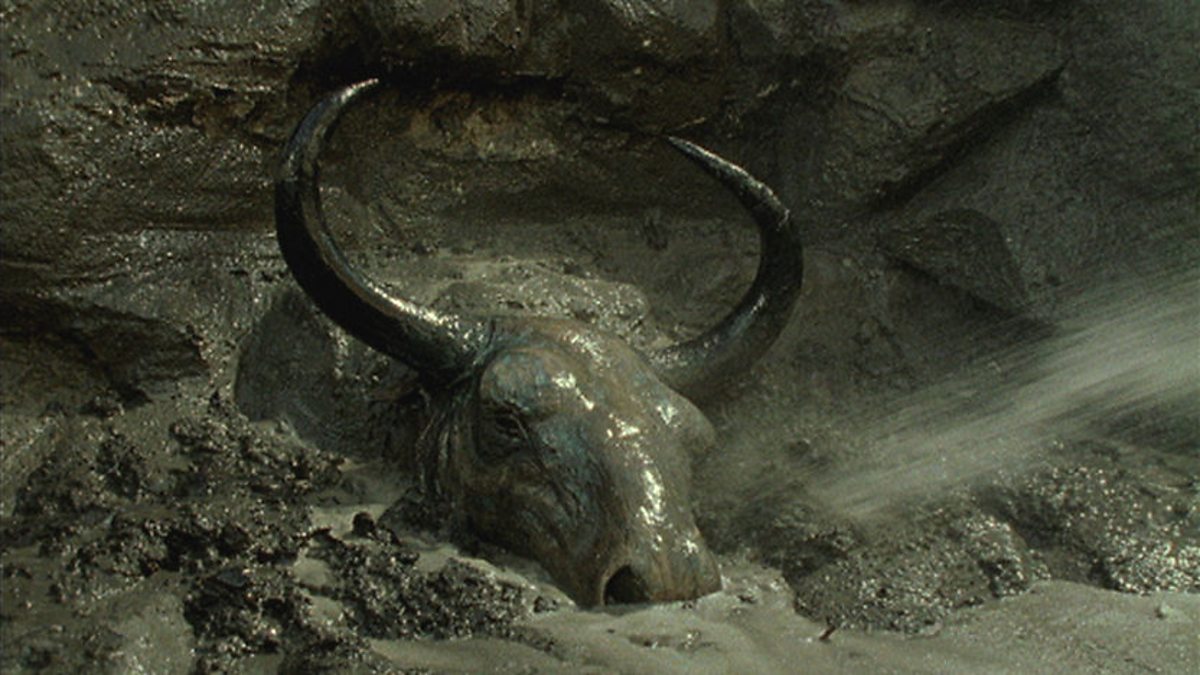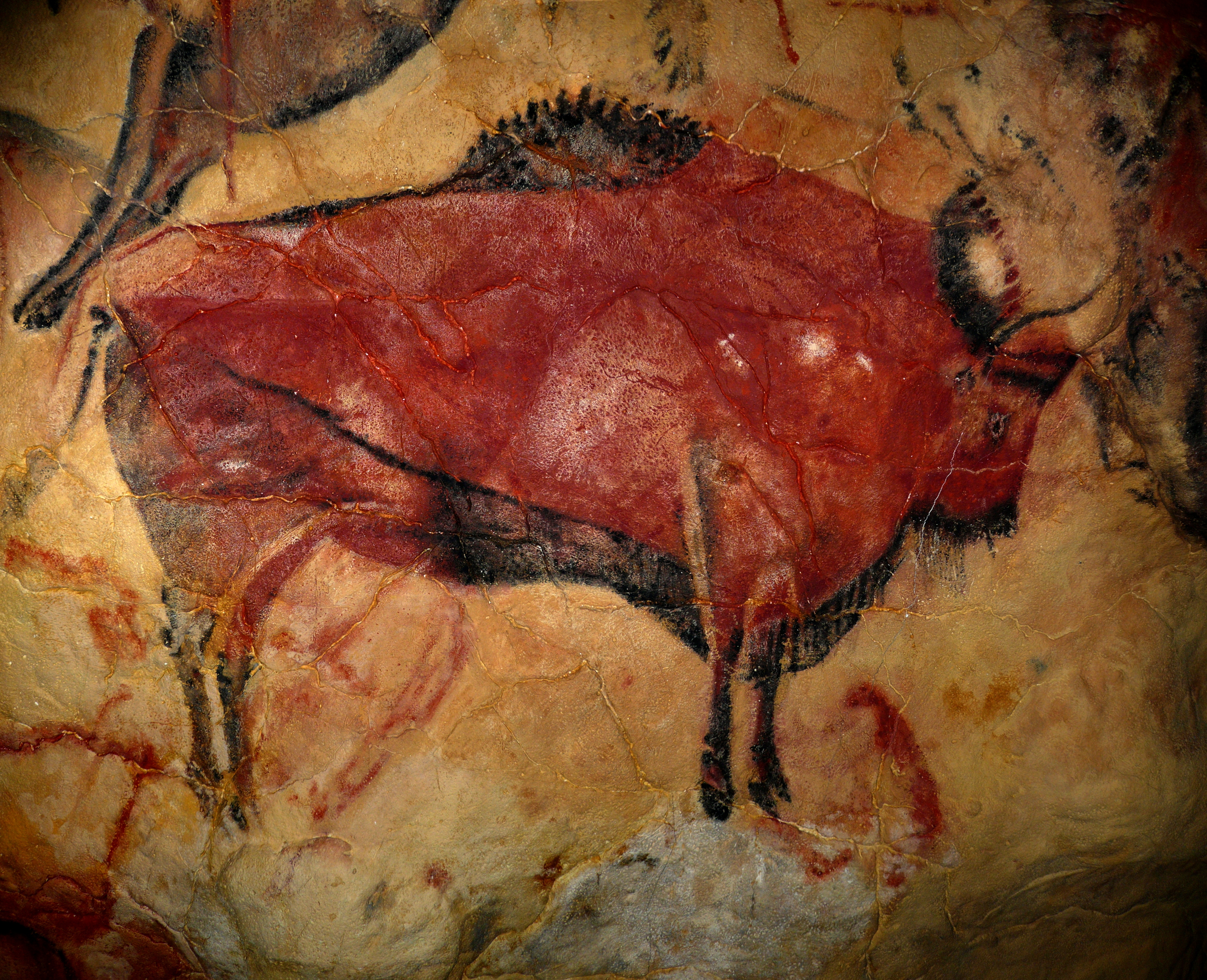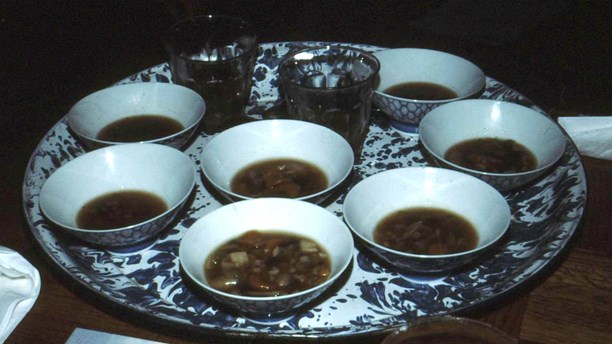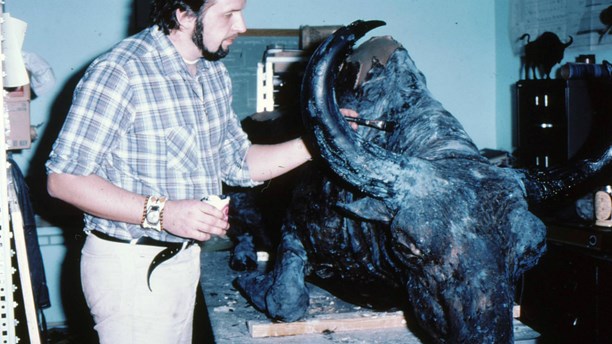Nothing you’ve ever experienced compares to the culinary adventures of R. Dale Guthrie and his team after they found a 36,000-year-old bison in the ice of Alaska. After uncovering a completely frozen bison in the Mammoth Steppe, they had the chance to try a piece of meat from the creature and took it. It was like nothing else ever.
Given the chance, enjoying an aged bit of meat is a privilege not all will have the chance to try. It’s not for everyone, but like aged cheese, meat can also offer some flavor nuances not found when served fresh.
Beef aging is quite common, sometimes spanning fifteen years to get the meat right. Like aged Scotch, you’ll pay for a good piece of aged meat, and you’ll never experience anything like it again in your life.
The team under Guthrie weren’t searching for culinary delights. They just happened upon one.
Blue Babe Discovered

(Artistic depiction | source: bbc.co.uk)
When Guthrie’s team found the (male) Bison mummy on the Mammoth Steppe in Alaska, blue mineral crystals covered its body. The man who first saw the bison had already named him Blue Babe, a gentle allusion to Babe The Blue Ox of Paul Bunyan fame.
Guthrie’s team uncovered him north of Fairbanks, Alaska in July of 1979, after the minor who first saw the specimen tipped them off. A blizzard had buried Blue Babe to the horns, mummifying him until discovered.
When Guthrie’s team first started working on him, his head was still frozen in the soil. Afraid that the melting body would decompose before the head thawed, they removed the body so they could refreeze it someplace safe.
Then they removed the head with tools, joining it with the body for further study.
The Time Of Blue Babe

(Bison cave art | source: macroevolution.net)
When bison like this wandered the earth, their reach stretched from Asia to Europe, and over the land bridge into Canada. This was the time of the giant mammals, the wooly mammoth, the mastodon, the giant sloth and the giant beaver.
At the time humans were also roaming about, hunting these large mammals, drawing depictions of their hunts on cave walls. This bison, however, was not killed by humans.
Blue Babe didn’t die from a little snow either, but from a fatal bite from a large cat, something like an ancient lion. There were teeth marks and blood drops frozen in time around his neck.
A Meal For A King

(Blue Babe Soup | source: sverigesradio.se)
The great thing about a discovery of this kind is that what you find is yours, so long as you’ve paid for the right to dig. Also, it’s always nice to pack a lunch for work, but it’s so much nicer when lunch shows up as a surprise.
Guthrie and his colleagues, one day in 1984 as they were prepping the bison for display, cut off a piece of the neck tissue. Luckily for them, the lion had left quite a bit of it for them. Not only that, the ice had preserved the meat well.
Although my preference would’ve been to grill some bison burgers, they chose to make soup. A chunk of meat went into a stew of vegetables, which they split amongst them.
From the account recalled by Guthrie in his book, the meat had a strong aroma, earthy, but was delicious. They found the meat tough, but edible. Nobody, it seems, asked for seconds. Nor did anyone die.

(source: sverigesradio.se)
It stands to reason that, given the chance to eat a 36,000-year-old frozen dinner would be worth any stomach issues that could arise, if only for the bragging rights.
Imagine the next party you attend, when someone starts bragging about a bit of twenty-year venison they’d enjoyed. You could take your time unfolding the details of the time you ate some aged meat too… from the ICE AGE!
If you’re interested in learning more, Guthrie wrote a book about the event, titled, Frozen Fauna of the Mammoth Steppe.

